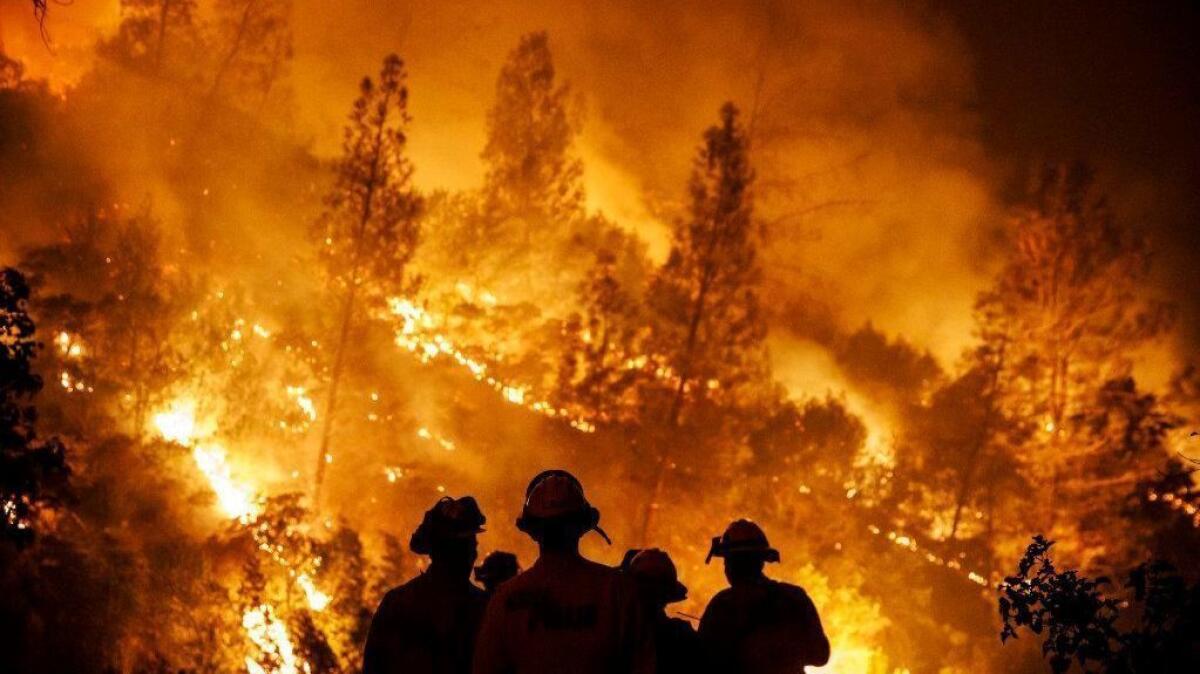Fire season is off to a slow start, but high burn potential is forecast for California

The Western U.S. has seen a slow start to this year’s fire season, but California can still expect “above normal” potential for large wildfires this summer as heavy crops of grasses sprouted by the wet winter dry out, according to a new government report on fire potential.
Southern California experienced the typical transition from cool, rainy weather to a warmer, drier pattern in April, and most storms that did hit the West Coast were too far north or weren’t wet enough to provide widespread rain, according to the National Interagency Fire Center’s outlook report.
That means such fuels as seasonal grasses cured at a rapid pace in Southern California’s inland areas and valleys. Seasonal grasses should be totally dried and ready to ignite by late May “in all but the highest alpine areas,” the report said.
Below-normal wildland fire potential is expected in the southern Sierra in June and July thanks to the heavy snowpack slowly melting. But heavy grass loads and a high number of dead trees in the Sierra foothills will lead to above-normal fire potential in many lower-elevation valleys.
Northern California received well-above-average rain this year, and snowpack readings reached more than 160% of average seasonal peak, according to the report. Quiet fire activity is expected at elevations above 6,500 feet through July.
Fire potential in much of Northern California will be at normal levels in May.
But by June, the mountains and forests around the Bay Area as well as the Sacramento Valley and nearby foothills are projected to have above-normal fire potential. The areas with above-normal fire potential are expected to expand north to the Oregon border in August.
The report also noted that there is a large number of dead and downed trees and plants in the northern Sacramento Valley because of a heavy snowstorm in February that caused extensive damage. That will increase the potential of significant wildfires.
Southern California should be near or only slightly above normal fire potential this summer, which should be “significantly cooler” than 2018, according to the report. Offshore wind events should continue at a slightly below-normal rate for the remainder of the spring.
More to Read
Sign up for Essential California
The most important California stories and recommendations in your inbox every morning.
You may occasionally receive promotional content from the Los Angeles Times.











